
Jazeps Grosvalds was a Latvian painter from Riga. He is now regarded as one of Latvia's finest painters, bringing new ideas in Latvian art at the time, and has several works on display in the Latvian National Museum of Art. Although he spent most of his life abroad his style is a combination of European Modernism and Abstract with a distinctly Latvian influence.
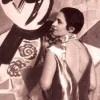
Aleksandra Mitrofanovna Beļcova was a Latvian-Russian painter.
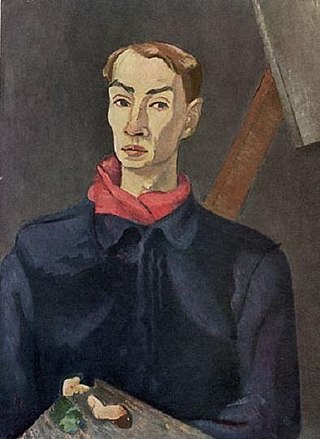
Jēkabs Kazaks was a Latvian modernist painter.

Aleksandr Davydovich Drevin was a Latvian-Russian painter.

Jānis Kalmīte was a Latvian expressionist painter and among the best-known artists in the Latvian post-World War II diaspora community. His name is associated with the development of a singular theme – the rija. Rijas, or threshing barns, were historically among the oldest structures on the traditional Latvian homestead. Throughout his half-century of exile from Latvia, Kalmīte transformed the rija into an artistic symbol for the persistence of Latvian ethnic culture in the face of invasion and occupation by foreign powers.

Edgars Vinters was a Latvian painter, specializing in landscapes and still life. His paintings, known for their rich and diverse use of color, have been described as "a source of inspiration for at least one generation" of Latvian artists.
Romans Suta was a Latvian painter, graphic artist, stage designer and art theoretician.

Lidija Auza was a Latvian painter, decorator and teacher. Among the first Latvian artists to apply different auxiliary materials, she is best known for her extraordinary assemblages and abstract paintings. Throughout her career, she became a remarkable figure in Latvian art releasing it from the official rules of socialist realism which encouraged other artists to remain true to their beliefs during the Soviet period.
Jēkabs Bīne was a Latvian painter, stained glass artist, teacher and art critic.
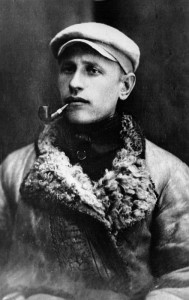
Karlis Johansson was a Latvian-Soviet avant-garde artist.
Rūdolfs Pērle was a Latvian painter. For a large part of his life, he specialised in producing still lifes, but widened his artistic range following his experiences during World War I and is today recognised as an important Latvian Symbolist.
Niklāvs Strunke (1894–1966) was a Latvian painter and graphic artist. One of the most original artists of the Latvian modernist generation, he also worked in stained glass and scenography. He wrote about art.. Born 6 October 1894 in Gostynin, Russian Empire, to the family of a non-commissioned officer in the army of the Russian Empire. In 1903 he moved to Valmiera to live with his father's sister, and in 1909 he graduated from Liepiņš Progymnasium there. He moved to St. Petersburg with his father, and studied 1909–11 at the school of the Imperial Society for the Encouragement of the Arts under Nikolai Roerich and Ivan Bilibin.
Kristaps Gulbis is a Latvian sculptor and artist known for numerous contemporary art projects in more than 25 countries. His works have been exhibited at the Venice Biennale, the Museum of Modern Art in Hokaido, Japan, and at metropolitan sites in London, Paris, Rome, Berlin, Riga, Moscow and other European cities, as well as in New York, Seoul, and Kaohsiung, Taiwan. The visual art projects curated, directed and managed by Gulbis have been set in England, Hungary, Germany, Latvia, Estonia and elsewhere in Europe.

Hilda Vīka, also known as Hilda Vīka-Eglīte, was a Latvian artist and writer. She made stylised watercolour and oil paintings of everyday life and dreamy visions. She wrote poetry, short stories and novels, illustrating her own works. Beginning in the 1930s, she incorporated Latvian mythology in her works. During the Soviet era she adapted to socialist realism but was expelled from the artist union for most of the 1950s. She was married to the writer Viktors Eglītis.
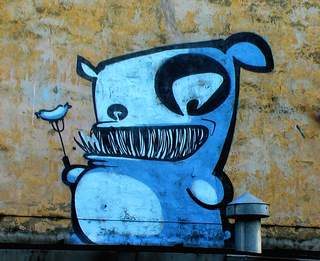
KIWIE is a pseudonymous Latvian street artist who has based his artistic style on a multiform repetition of one specific image – KIWIE monster character. He has been active since 2006.

Teodors Zaļkalns was a Latvian sculptor, poet, medalist and teacher who was among the first professional Latvian sculptors.
Biruta Delle is a Latvian painter mainly noted for her portraits and landscapes.
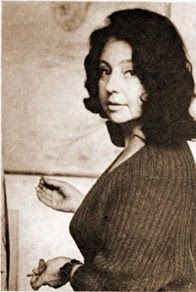
Felicita Pauļuka was a Latvian painter noted for her portraits, nudes, and book illustrations. In the second half of the 20th century, Pauļuka was attributed to the development of Latvian pastel painting traditions.
Ēvī Upeniece was a Latvian sculptor who worked within the portrait genre. She received the Republic of Latvia Order of the Three Stars (2021) for her creative work and professional achievements.

Ansis Artums was a Latvian landscape painter and master of still life, who worked in oil painting technique. He spent most of his life in Tukums. Artums is most widely known for his paintings of spring and summer landscapes, blooming gardens, flower vases, landscapes of Tukums, blooming chestnut trees, lilacs, and fritillaries.












